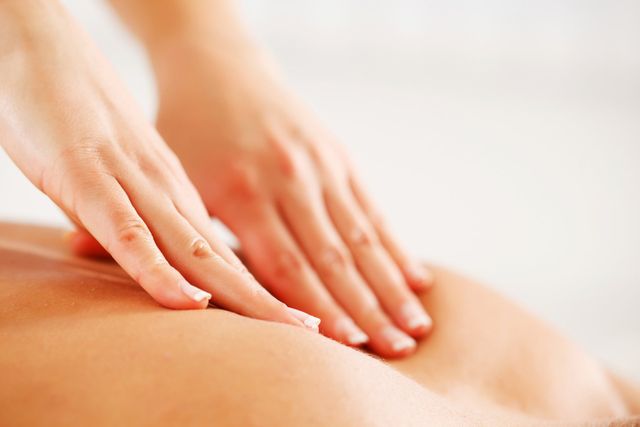
Home Massage Relax & Heal - Exploring Fascia Release and Trigger Point Techniques for Optimal Wellness
How is Fascia “liberated”? with Home Massage service. Fascia, often referred to as the body's connective tissue web, plays a critical role in mobility, posture,
How is Fascia “liberated”? with Home Massage service

Fascia, often referred to as the body's connective tissue web, plays a critical role in mobility, posture, and pain regulation. When fascia becomes tight or rigid, it can restrict movement, cause discomfort, and lead to injuries. The process of fascia “release” involves techniques aimed at restoring the fascia's natural flexibility and pliability, thereby reducing pain and enhancing physical function. This section explores the nature of fascia, the reasons it becomes restricted, and how carefully applied manual and mechanical techniques can promote fascia's health.
The Complexity of Fascia in the Human Body
Fascia is a continuous, complex web of connective tissue that encompasses muscles, bones, nerves, and organs, forming a network that stabilizes and supports the entire body. Unlike muscles or bones, fascia is often invisible to the naked eye, but it exerts profound influence on how the body moves and feels. Its role extends beyond mere support; fascia contributes to proprioception, lymphatic flow, and even emotional states, linking physical health to mental well-being.
Fascia is composed of collagen and elastin fibers embedded in a gel-like ground substance. This composition gives it both strength and flexibility. Under normal circumstances, fascia remains pliable, accommodating movement and load. However, factors such as injury, repetitive strain, poor posture, or prolonged immobilization can cause fascia to become sticky, shortened, or dense—a condition often referred to as fascial restriction or adhesions.
Understanding the dynamic nature of fascia is essential for appreciating how therapeutic interventions can restore its function. Fascia's ability to adapt and heal makes it a prime target for manual therapies aimed at “released” or rejuvenated connective tissue—a process fundamental to home massage techniques designed to relax and normalize tissues.
How Fascia Becomes Restricted and Its Effects on Movement
Restrictions in fascia usually arise when the natural elasticity is compromised. When fascia encounters trauma, the body responds with inflammation, leading to the formation of adhesions—bands of denser, less flexible tissue. These adhesions tether muscles and other structures, limiting range of motion and creating pain. Over time, the body may compensate for these restrictions by altering movement patterns, which can result in muscle imbalances, joint stress, and increased risk of injury.
The connection between fascial restriction and chronic pain is well-documented. For instance, tight fascia in the neck and shoulders can cause tension headaches, while restricted fascial tissue around the lower back often contributes to persistent discomfort or sciatica. Postural imbalances, symptoms of repetitive strain, and physical trauma contribute to this cycle of restriction, underscoring the importance of targeted fascia release.
Techniques for Fascia Release in whit Home Massage
Modern fascia release methods can be adapted for home use with the right tools and techniques. Foam rollers, massage balls, and specialized cupping sets are common implements that enable self-administered fascia work. These tools apply controlled pressure to specific areas, helping to loosen tight fascia and promote blood flow.
Foam rolling remains one of the most accessible and effective techniques. By rolling over muscles and fascia, individuals can gently stretch and soften restrictive tissue. The process encourages the fascial tissue to adapt and elongate, which can alleviate pain and enhance mobility over time. The key to successful foam rolling lies in consistency and proper technique—rolling slowly and pausing tender spots to allow adaptive release.
Cupping therapy, once considered exclusively a practitioner's tool, has gained popularity for home use. Using suction cups, you can create negative pressure over restricted fascia, lifting tissue away from underlying structures and promoting circulation. This decompressive effect helps break down adhesions, ultimately restoring fascia's natural flexibility.
Trigger Point Therapy

Trigger point therapy is a focused approach targeting specific nodules within the muscle fibers—commonly known as muscle knots. These points are often tender, painful, and can cause referred pain far from their original location. The efficacy of trigger point therapy lies in its precision; by targeting these hyperirritable spots, practitioners aim to relax the tight muscle fibers, diminish pain, and restore normal function.
Understanding Trigger Points and Their Impact on Health
Trigger points are localized hyperactive areas within a muscle or fascia, often developed through injury, repetitive movements, poor posture, or stress overload. These points create palpable nodules that can be tender or painful to touch. Interestingly, trigger points not only cause localized discomfort but also can refer pain to distant regions, complicating diagnosis and treatment.
The phenomenon of referred pain from trigger points is rooted in the nervous system’s processing of pain signals. A trigger point in the neck might manifest as a headache; a tight knot in the upper back might produce arm pain, leading to misdiagnosis or ineffective treatment if misunderstood. This interconnected web underscores the importance of specific, targeted therapy over generalized massage techniques.
From a physiological perspective, trigger points are believed to involve muscle fibers that are in a constant state of contraction, leading to ischemia (reduced blood flow), accumulation of waste products, and increased nociceptive (pain) signaling. This ongoing cycle sustains pain and can weaken the muscle, perpetuating a cycle of discomfort and dysfunction.
The Role of Trigger Point Therapy in Pain Management
Trigger point therapy involves applying sustained pressure directly on these tender spots to deactivate or “release” them. The pressure is maintained until the muscle fibers soften, often visible as a decrease in tenderness or nodularity. This direct method aims to reduce muscle tension, improve circulation, and diminish pain referral.
A key challenge with trigger point therapy is locating these small, often deep-seated nodules, which requires skill and anatomical knowledge. For home practitioners, tools like massage balls or percussion devices help target tough-to-reach trigger points. Consistent pressure over time not only alleviates immediate pain but also helps in breaking the cycle of muscle tension, improving functional movement and reducing the likelihood of recurrence.
Deep tissue massage techniques, including ischemic compression and sustained pressure, are complementary strategies to conventional trigger point therapies. For those with advanced training or under professional guidance, interventions like dry needling and ultrasound further complement manual work, providing more profound and lasting relief.
Practical Approaches for Self-Treatment of Trigger Points
Self-treatment of trigger points can be effectively integrated into daily routines. Using simple tools such as tennis balls or specialized massage devices, individuals can apply targeted pressure to identified trigger points. The technique involves positioning the tool or hand directly on the knot, applying firm pressure, and maintaining it for 30-60 seconds until the discomfort diminishes.
Percussion therapy devices like massage guns have gained popularity as accessible self-treatment tools for trigger points. These devices deliver rapid, pulsing pressure that penetrates deep into tissues, helping to relax muscles and deactivate trigger points. When used properly, they can significantly reduce muscle tightness and pain, providing quick relief during stressful or injury-prone periods.
Regular stretching, posture correction, and strengthening exercises complement trigger point work by promoting muscle balance and preventing the formation of new trigger points. A comprehensive approach should also include hydration, adequate rest, and stress management—factors that influence muscle health and trigger point development.
How Are These Techniques Incorporated Into Massage?

Incorporating fascia release and trigger point therapy into massage practice enhances treatment outcomes, especially when addressing pain, mobility, and musculoskeletal health. These techniques are often integrated into deep tissue, sports, or orthopedic massages, which focus on targeted intervention rather than relaxation alone. Understanding their place within a massage setting allows practitioners to tailor sessions to meet individual needs effectively.
Integrating Fascia Release and Trigger Point Therapy in Professional Massage
Professional massage therapists have a repertoire of techniques to address fascial restrictions and trigger points. Their approach begins with assessment—identifying problem areas through palpation, movement tests, and client feedback. Once areas of concern are pinpointed, therapists can decide whether to employ fascial release, trigger point therapy, or a combination of both.
Fascia release techniques include manual stretching, skin lifting, foam rolling, or cupping. These methods are designed to improve tissue elasticity over broad areas and are often performed in longer, sustained strokes that encourage fascial flexibility. Trigger point therapy, on the other hand, involves precise, localized pressure on nodules, with techniques such as ischemic compression or sustained static pressure—deliberately targeting painful or restricted spots.
Many therapists also employ complementary techniques like vibration, stretching, or electrical stimulation to enhance the effectiveness of fascia and trigger point work. Relaxation-focused massages may subtly incorporate these methods to improve overall comfort, while deeper, injury-specific sessions prioritize targeted interventions. Communicating your goals—whether pain relief, improved range of motion, or stress reduction—helps the therapist customize the treatment.
Customizing Massage for Personal Goals and Needs
For example, a session might focus initially on gentle fascia mobilization to warm tissues, followed by targeted trigger point work on persisting knots. Incorporating tools such as percussion devices or massage balls can enhance self-treatment between professional visits or as part of a regular self-care regimen. The key is ongoing communication with your massage therapist or self-awareness—listening to your body and adjusting approaches to avoid over-treating or causing discomfort.
diy Home Massage Strategies for Fascia and Trigger Point Work
Practicing gentle, sustained pressure on tender spots, massaging along muscle lines with a foam roller, or applying vacuum therapy with cupping sets can provide significant relief. The consistent application of these methods helps prevent the formation of new trigger points, keeps fascia elastic, and promotes overall musculoskeletal health. When combined with regular stretching and proper hydration, these techniques foster a holistic approach to pain management and physical function.
Conclusion
Embracing a comprehensive understanding of fascia release and trigger point therapy reveals their vital roles in home massage practices aimed at relax & heal. Fascia, the body's connective tissue web, responds remarkably well to manual and mechanical intervention, which can restore movement, reduce pain, and enhance overall health. Similarly, targeted trigger point therapy addresses localized muscle knots that contribute to discomfort and referred pain, offering a powerful tool for pain management. Integrating these techniques into professional massages or personal routines allows for an individualized, effective approach—turning your home space into a sanctuary of healing and relaxation. By adopting consistent, informed practices, you can unlock the full potential of your body’s innate healing mechanisms, fostering a healthier, more resilient self from the comfort of home.
| Technique | Application Method | Benefits | Tools Recommended |
|---|---|---|---|
| Fascia Release | Manual stretching, foam rolling, cupping | Improved flexibility, reduced pain | Foam roller, massage ball, cupping sets |
| Trigger Point Therapy | Sustained pressure, percussion devices, stretching | Pain relief, increased range of motion | Massage ball, massage gun, fingers |






